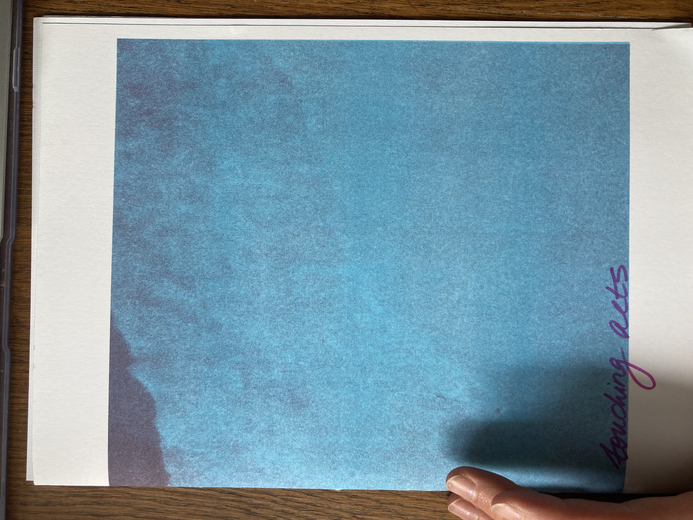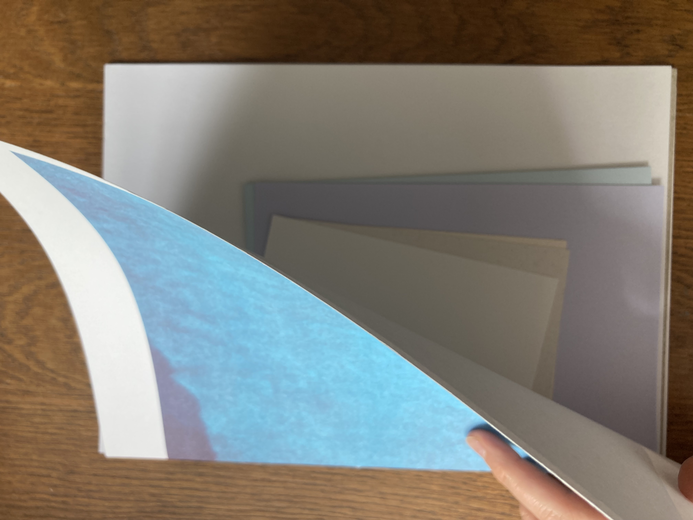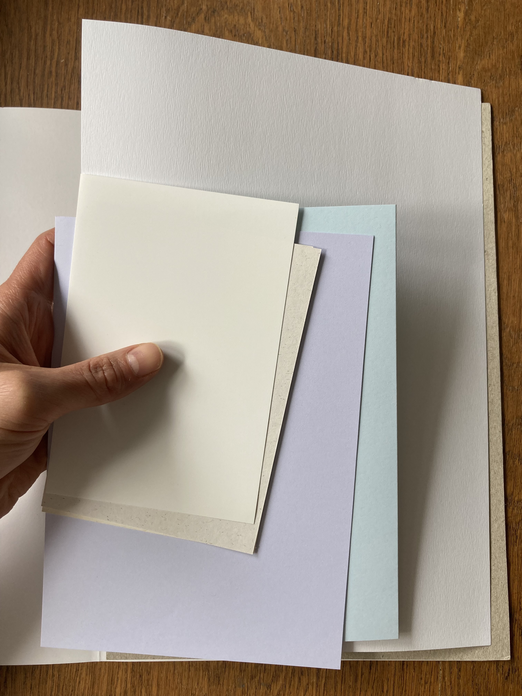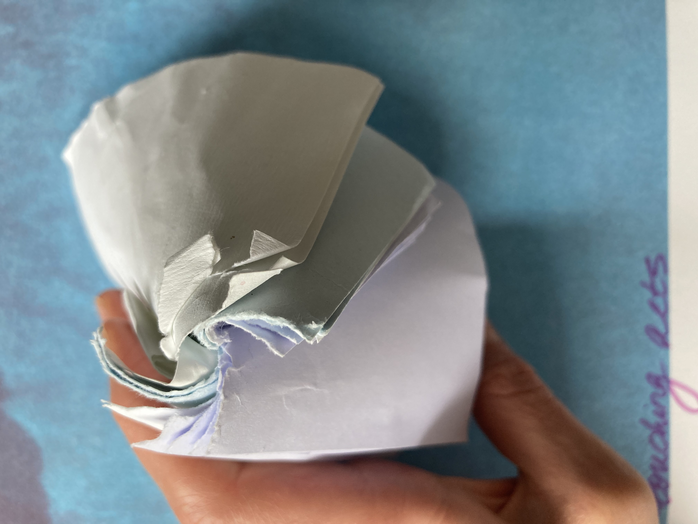INTRODUCTION TO DREAM
The terminology for describing 'practice research', 'research in-and-through art practice' or 'artistic research' is often slippery and changeable. The title of this seminar programme reflects this – the acronym DREAM might stand for different things: Doctoral Research Encounters in Artistic Methodologies; or, Doing Research Experientially with Artistic Methods; or, Developing Research Experimentally through Artistic Means. Yet, the underpinning principle for DREAM is to provide a context for exploring and deepening understanding of research undertaken with, in and through practice.
More specifically, the aim of DREAM is to focus on the "how" of art practice-as-research, research in-and-through art practice or artistic research. This is not to say that the “what” or the “why” are unimportant, indeed the “what” and “why” of the research will most likely be entangled with the "how". Rather, the "how" can often be one of the more tricky aspects of artistic research to identify, to elaborate, to name, to share, to even value. For many artistic researchers, and indeed for many PhD submissions, the sense of how-ness or even of the broader methodology can often lack confidence or clarity. Practices and methods can be inadequately articulated or communicated, ineffectively shared or shown.
Unlike some disciplines where there are clearly identified protocols and conventions for research, artistic research methodology and methods often evolve in and through the process of the research itself. As Henk Borgdorff argues, “The erratic nature of creative discovery — of which unsystematic drifting, serendipity, chance inspirations and clues form an integral part — is such that a methodological justification is not easy to codify … it involves doing unpredictable things, and this implies intuition and some measure of randomness. Research is more like exploration than following a firm path.”1 There can be a sense even of dreaming up the methods and methodology co-emergent to the enquiry. Yet, this dreaming up may be carefully differentiated from making things up as we go along. For some artistic researchers, their contribution to knowledge could even relate to the development of original methodology, methods and practices, a novel way of undertaking the research itself.
We sometimes do things without always knowing really how we are doing it — a kind of intuitive or even tacit knowledge cultivated over many years of practice. We just do what we do. Or else, artists can often operate as bricoleurs, ‘braiding’, poaching, stealing, or borrowing diverse methods from other disciplines to create a methodological assemblage or bricolage involving multiple, mobile and mutable theories, methods and practice perspectives. Here, as Sarat Maharaj suggests, research is performed through the “détournement of ready-made knowledge systems” towards “indeterminate modes”.2 Yet paradoxically, artists can at times appear more comfortable describing those methods borrowed from other disciplines than articulating the how-ness of methods emerging from artistic research itself. The problem in part is that some of these methods operate in a different key to language, or rather to those forms of discursive, propositional language, so are somewhat resistant to being communicated in the usual ways, through words, through explication, through linguistic description. Or else, as Vytautus Michelkevičius argues, there can be a tendency within artistic research to avoid talking explicitly about methods and methodology, to “circumvent this question by claiming that there is no single universal applicable method and that the field is characterised by methodological anarchy, libertinism, and pluralism.”3
So this is our challenge, since the articulation of methods and methodology is a critical feature of practice research, and of the PhD process in particular. Art practice-as-research, research in-and-through art practice or artistic research is now very established and there is a substantial and ever growing context supporting this; a plethora of recent publications, as well as the international Society of Artistic Research focused specifically on this field.4 In parallel to the specific “what” and “why” of the research and its contexts, consider the specificity of this research context. Why is it in important that one’s research was done through artistic methods or practices?” This is a question of the research’s how-ness.
How do we do what we do – specifically, how can we communicate the how-ness of artistic research practices and methods? Can we show rather than necessarily tell? How can we capture, document and communicate the unfolding research process? What do we need to record or document – how do we do this? How is this material reflected on – through what media can this be undertaken?
For many of us, artistic methods or ‘ways of doing things’ will be operative at the level of the object or focus of our research, in the framing methodology and in the methods through which we undertake our research, the means of capture/reflection, and the presentation of research. We each work differently — the role of artistic approaches will be more or less in each of these areas. Indeed, many of us will be working with a hybrid methodology. How do artistic research practices and methods meet with, enter dialogue, become entangled with other practices and methods drawn from, borrowed, détourned from other fields and disciplines? How are different practices and methods worked with, in the frame of an artistic enquiry – when are they used in the same way as the discipline from which they are borrowed, when/how/why are they changed? You could also consider this in relation to the perennial question of how theory and practice intertwine — where for some these are conceived as distinct if interrelated modes of enquiry, whilst for others, practice is theory, or theory is practice. How are these interrelations?
Methodology evolves and is not always fully known at the outset of the enquiry. Undoubtedly there will be moments of not knowing and of uncertainty, of trying things out and of allowing things to fail. The DREAM seminars provide a context for developing confidence and sharing practice, but also operates as a supportive environment within which to be open about this uncertainty, the not knowing, the messiness and inarticulacy; where honesty and vulnerability are embraced as pre-conditions for the creation of a collegiate culture.
[1] Henk Borgdorff, ‘The Production of Knowledge in Artistic Research’, in Michael Biggs and Henrik Karlsson (Eds.), The Routledge Companion to Research in the Arts, London: Routledge, 2011, p.57.
[2] Sarat Maharaj, ‘Unfinishable Sketch of “An Unknown Object in 4-D”: Scenes of Artistic Research’, in Artistic Research (eds.) Annette Balema and Henk Slager (Lier & Boog) Rodopi, 2011)
[3] Vytautus Michelkevičius, Mapping Artistic Research: Towards Diagrammatic Knowing, (Vilnius Academy of Arts Press, 2018), p.124.
[4] See http://www.societyforartisticresearch.org/society-for-artistic-research/ and The Journal of Artistic Research, http://jar-online.net/
DREAM - Doctoral Research Encounters in Artistic Methodologies; or, Doing Research Experientially with Artistic Methods; or, Developing Research Experimentally through Artistic Means. Initiated in 2017 by Emma Cocker and Danica Maier, DREAM is a seminar series specifically for PhD researchers focusing on the “how” of art practice-as-research, research in-and-through art practice or artistic research. How do we do what we do – and how might we communicate and share the how-ness of artistic research practices and methods?
DREAM ENCOUNTERS
A central component of the seminar programme unfolds through a series of ENCOUNTERS. Doctoral researchers are invited to activate an ‘encounter’ with some aspect of their current enquiry as a live exploration. The ENCOUNTERS might focus on some specific aspect of the research practice that requires testing out or pressuring further: it can be speculative and explorative. The ENCOUNTERS are conceived as testing spaces for rehearsing and working with emergent ideas and research-in-progress. The format of these sessions is flexible and might involve experiential engagements and interactions with individual’s research practice. By seeking to activate or enact the enquiry within the practice, through the practice, these sessions explore the ‘how’ of the research approach – by asking: How do you do the research, how do you do what you do?
See below for documentation/extracts of some of the DREAM ENCOUNTERS from recent years.
Title: Snippet - Eight to Infinate
Location: Nottingham Contemporary
Date: 07/10/2021
Music: Afrodeutsche & Alex Jovčić-Sas
Dancer: Martin Tomlinson
Video: Jake Sharpe & Rowena Brett
Producer: Kat Brown
Editing: Alex Jovčić-Sas
"I am exploring the idea of embodied and embedded relationality, (Braidotti. 2013.49) through encounters with a virtual adolescent figure. My research examines the paradox of (dis) embodiment in immersive events and how this affects the encounter with a porous body. As part of my research practice on bodily perception I began a series of iterative events with a virtual body, using a 3D digital scanner of my sculpture from an original body cast, young dancer (2016). At UTS, Sydney, (2017) I ran a masterclass in the 3D Data Arena, exploring how the young female body is presented differently by digital technologies. The Data Arena is an interactive 3D/360 space, with large screens surrounding the participants. When I brought up the 3D wireframe scan of young dancer, the participants were completely surrounded by the lines of the virtual body, they reached out to touch the wireframe, but their hands appeared to go through the form. One of the participants was given an interactive controller and she could move the image, altering both the scale and our relationship in space to the form. The participant’s sense of proprioception was altered by the encounter, they all recorded that they felt both awe and a sense of discombobulation. Following this event, I developed several VR encounters of the virtual body to further explore the affect of breaking down the boundaries of the porous body. This encounter at DREAM, (2020) was an experiment on interactive projections onto a curved screen, with the participants moving the body, to see whether this gave them agency, and how it altered their relationship to the virtual body."
"My research looks to revise two historical composers, Gertrud Grunow (Bauhaus) and Daphne Oram (BBC) through a curatorial study, in which I have commissioned Electronic Music Producer, Afrodeutsche, and Choreographer and Dancer, Martin Tomlinson, to present a live event which presents work created that responds to the archival materials of both historical figures. Grunow and Oram worked with Optical Sound - a way of creating compositions with visual methods (the former with colour, the latter with shape) as a way of making music that was supposed to create a stronger connection to the world around them and abandon traditional western compositional techniques. Both figures were excluded from their institutional histories, and this study aims to revise their position by examining these figures as ghosts within their archives (Gordon; 2008, Otto; 2019). This examination looks at the figures as spectres in their archives and looks at what is not being said about these figures/their work in order to gain a greater understanding of their practices, and the proposes of their respective theories.
For the DREAM encounter, I asked the participants to take part in "Deep Listening" exercises, adapted from Pauline Oliveros's methodology (Deep Listening; A composers Sound Practice, 2005) in which the participants were directed through a series of breathing exercises in order to prepare their minds to fully experience sound, before being played the three individual movements of the commissioned piece. Once they had undertaken this exercise, they were asked to listen to each movement individually, and then comment on the sounds that they experienced, by commenting on their emotional responses to the sounds, their feelings when listening, as well as the visual journey that they went on. Once this had been done for all three movements, the participants were then asked to respond to a recording of the live performance and to comment on how their perception of the music changed once they had viewed the dance interpretation by Martin Tomlinson.
“I was interested in exploring embodied canine knowledge through an experimental co-authored film, much of which is filmed from a canine point of view. I wanted to explore two questions: (1) What does it feel like to inhabit the canine POV, for a prolonged period, on a big screen, or 1-1 scale and how might this trouble human subjectivity? (2) Can the companion animal really be seen as co-author of the walk and its document? A Year With the Meadows is a 25min long film, documenting moments from over 100 canine led walks, taken over a 12 month period, through and with a local nature reserve, just south of Leicester. In connecting with the canine, olfactory dominated sensory lifeworld, through the visual, my hope is that the human viewer gets a glimpse of what it might be like to inhabit the body of a more-than-human actor, which troubles and unsettles human subjectivity. The DREAM ENCOUNTER provided the first opportunity to present an early edit of the film on a large screen and I was specifically interested in how a prolonged exposure to the often visually chaotic and abstract world of the canine POV camera, might help us to embody the canine. Also, how human subjectivity might be troubled through our visual sensory entanglement, seeing the camera as an extension of our visual bodies, through the body of an-other, more-than-human body." Darren O'Brien, DREAM, 2022
The aim of this exercise was to try to establish the ‘living’ elements that come through the composition, a notion that comes from Simon Emmerson's 2007 publication, Living Electronic Music. Much in the same way that the archival research before was concerned with the ghostly traces to identify Grunow and Oram’s theories, the commission does the opposite and creates a living contemporary space for them to be practised. This musicological analysis focuses on the musical experience as a product of performance that was hoped to be identified though the Deep Listening methods. By asking the participants to engage with the music in the method described above, they were able to offer comments and feedback which they could help to trace the influences of Grunow, Oram, and Afrodeutsche, in addition to where the archive materials were present from the commissioning process and went some way to testing how Grunow and Oram's theories worked in contemporary practice.
In the example, you can see all of these elements - I have overlayed some of the feedback of the participants on top of the video of the performance. In Yellow, the emotional responses that were used to compose the movement are displayed, while the white is the responses of the group at DREAM. There is a difference between the represented emotions of the dancer and the emotions as mapped by the participants in the DREAM session. The response from the group at DREAM are from when they only listening to the music, was something different, almost a complete opposite of the emotional states on which the piece is based on. What becomes present from this juxtaposition of the emotional responses is the "living" elements that are brought through from Afrodeutsche, who describes her ways of composing as "something that has a baseline of being melancholy" (in an interview after the performance, 2021). The way in which she has composed this movement, and through the cultural associations that the audience has with this genre and way of composing presents these feelings of anxiety, urgency, quickness, and obscurity.
From this session, I was able to gain insight into how an audience engaged with the sound, as well as engaged with the physical presence of the dancer. The results confirmed that the presence of the dancer distracted from the representation of the music, as their presence offered something that was different to the individuals and their own contextual experience of the sound. As well as this, there was a lot of data that was gained that was useful to the musicological analysis of how each figure influenced the piece of music as a whole, in terms of the presentation of emotion, that can be mapped through the language that they used in order to describe the journeys that they went on during their engagement with the music.” Alex Jovčić-Sas, DREAM, 2022
"This experimental study session has been performed as ENCOUNTER in the DREAM seminar series at Nottingham Trent in May 2021, co-led by Victoria Zoe CALLUS and Andrea JAEGER and funded by AHRC-Midlands-3-Cities. This videoclip shows responses by participants after an experimental study session engaging them in the act of ‘touching paper’." Andrea Jaeger, DREAM 2021
Fig 1: Participants responses after the encounter of ‘touching paper’ on a shared whitboard canvas © Andrea JAEGER 2022
Fig 2 – 4: Documentation footage of participants activity pack © Andrea JAEGER 2022
Fig 5: Documentation shots made during the study session © Andrea JAEGER 2022
Video: ‘Touching acts_Encountering: Encountering paper and touch differently’ © Andrea JAEGER 2022



